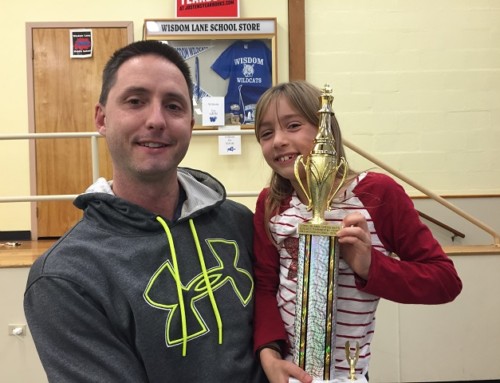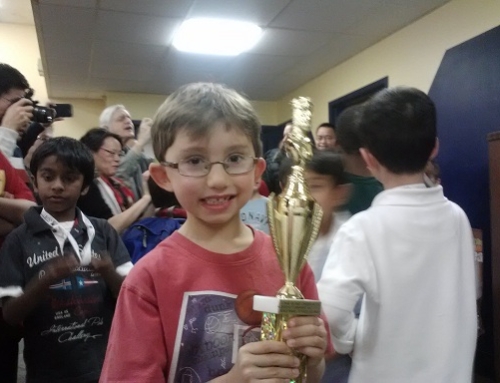First, they have to learn how the pieces move. So you can find someone familiar with the game to demonstrate the moves – or some free instruction on the internet. OR you can use Chess Titans, a program that comes bundled with Windows (under Accessories, next to Solitaire and Minesweeper). On that game you can easily configure it so that when you click on a piece, it will highlight all possible moves for it. This is how my daughter, at age 3, learned that a knight could move *up 2 and over 1*, all on her own.
Next they have to learn about the end of the game, i.e. checkmate. For this there happens to be a terrific resource out there, for free on the web and in app form, called *Mate in One*. Here’s one such website, although there are others. Just search away.
The kids will then learn some attacking strategies: pins, forks, skewers, and discovered attacks.
After that they will advance to studying opening theory and the endgame.
That’s it in a nutshell!
Again, this instruction is all online in many forms and most of it is 100% FREE. So anyone can learn to play completely on their own. (YouTube is absolutely loaded with lessons, to put it mildly.)
But it’s also a good idea to seek out some real-life, non-virtual games for beginners. There are tons of chess players around you, believe me. And most would be happy to help your child get going.
I taught my kids the basic moves myself. But I also signed them up for free instruction at the local library and we became active in the local chess scene. New York, with it’s international flavor, is a real hotbed of chess…
My son’s game has really taken off in only the past 10 months since he started weekly chess classes ($15 per session) and since we joined Chess.com – an absolutely terrific website. He also played in a few tournaments this past year.
Click the forward arrow on the above graphic to see a recent game of his, one where he made an amazing comeback after losing his queen. John played as white.
I had always known that chess was a great, intellectual game….but I had truly underestimated how rich of an educational tool it was. I mean it not only primes the brain for deep, multi-level thinking, it’s also an international language and a fun pastime that can provide lifetime enjoyment. It’s also a game that builds character in the sense that players learn to respect their opponents and they learn how to deal with a little frustration/adversity (like when you lose your queen!) in a safe environment.
So, what are you waiting for? Get your kids started! Get yourself started!
Oh yeah….we also played with an app called Solitaire Chess that both the kids and I enjoyed:
UPDATE – please see my post – First Chess Championship!




